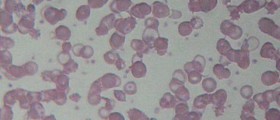
Growth hormone deficiency, also known as dwarfism, is a disorder characterized by short height in childhood due to lack of this hormone. The hormone is of major importance for growth and development.
Restricted growth can in some children be treated with human growth hormone. It is basically categorized into proportionate short stature and disproportionate short stature. In the first case there is general lack of growth while in the second one a person has only a problem regarding the way certain bones are growing.
Proportionate Short Stature
In people with proportionate short stature the length of the trunk, including the abdomen and chest is in normal proportion with the lower extremities. Still, there is evident lack of height.
In the majority of cases people with this disorder have small parents. The condition may also occur if the body does not produce sufficient amount of growth hormone.
The main reason why a person ends up with proportionate short statures is because his/her parents are small themselves. As for growth hormone deficiency, this problem basically occurs either in childhood or adulthood. If there is lack of growth hormone in adults, the reason lies in the presence of tumors of the pituitary gland. This medical issue may also develop as a consequence of radiation therapy to the head or sarcoidosis. Lack of growth hormone in childhood is closely connected with inadequate production of the hormone due to other syndromes or an injury/illness affecting the head.Disproportionate Short Stature
In this case there is a clear disproportion of certain parts of the body because they do not grow at an equal pace. Because of that certain limbs may be shorter and sometimes there is a severe lack of growth in general.
This condition is most commonly a consequence of gene defects. Many children suffering from disproportionate short stature have parents of normal height.
The defect gene is blamed for inadequate growth and development of certain bones and cartilage. These patients are also capable of passing their faulty gene onto their heirs.
The most commonly reported type of disproportionate short stature is achondroplasia. Patients with this condition have abnormally shorts extremities, especially the upper arms and thighs. Furthermore, their forehead is prominent, hands and feet are shorts and they frequently develop spinal abnormalities.
Apart from achondroplasia there are many other genetic disorder associated with disproportionate short stature like hypochondroplasia, mucopolysaccharide disease, spondyloepiphyseal dysplasia, multiple epiphyseal dysplasia, Conradi syndrome and many more.






-In-Infants-And-Older-Children_f_280x120.jpg)



-And-Children-16-Warning-Signs-And-Symptoms_f_280x120.jpg)






Your thoughts on this
Loading...